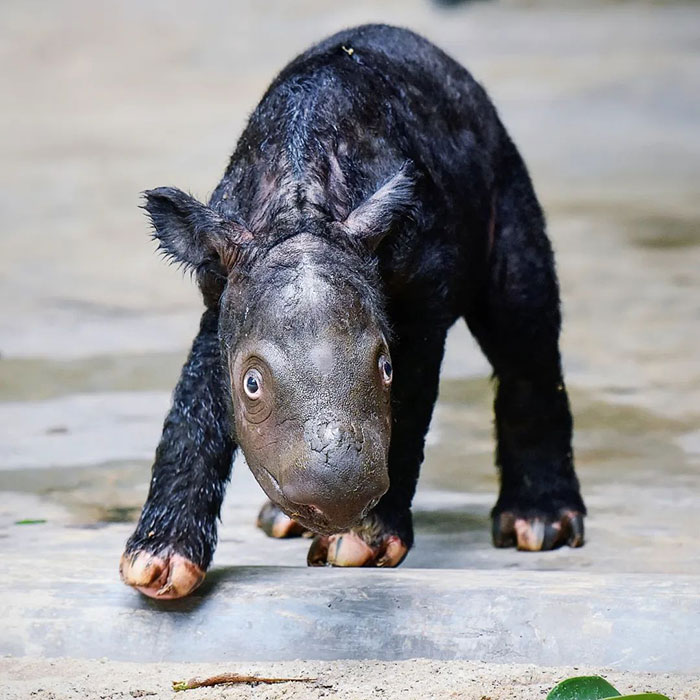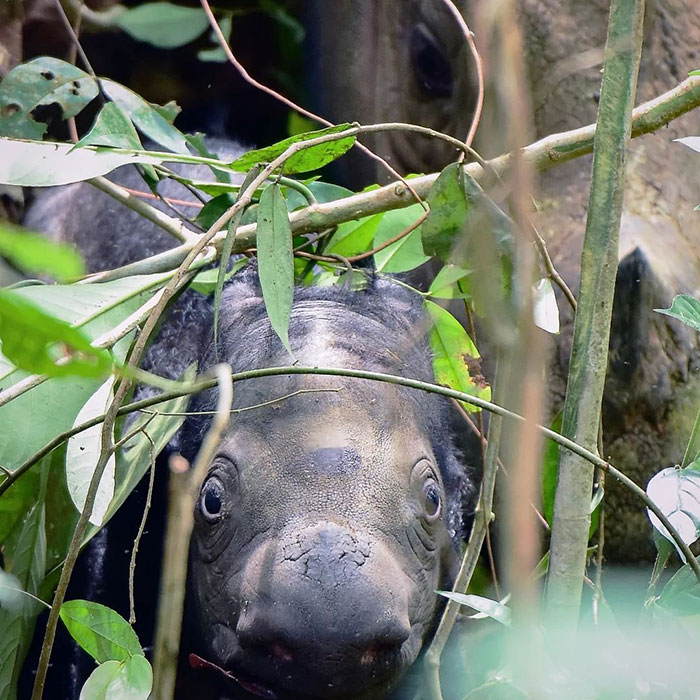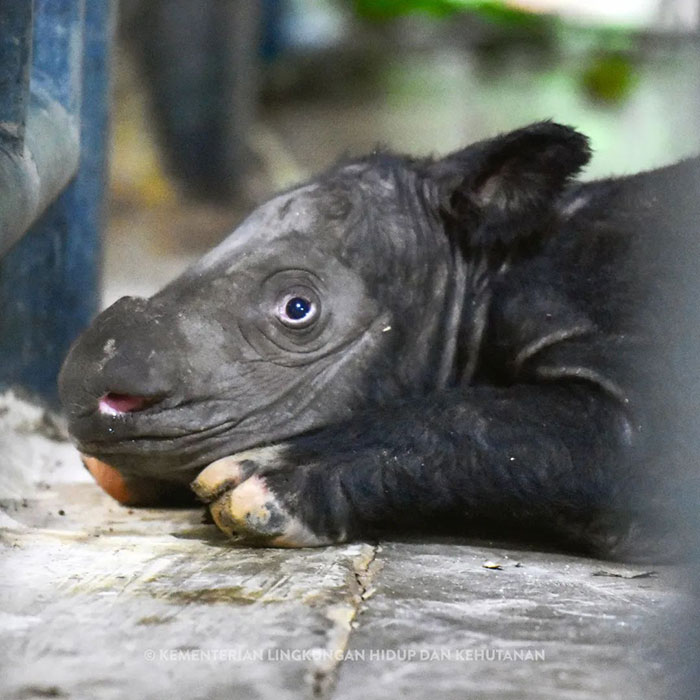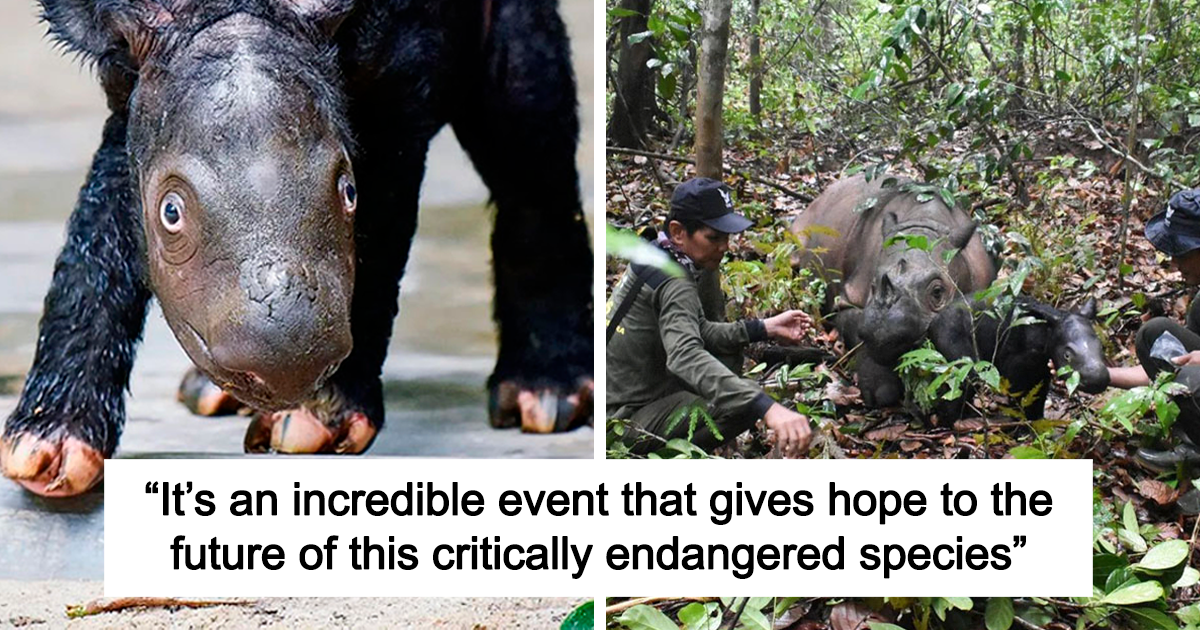In a heartwarming triumph for nature, conservation, and the animal kingdom, a critically endangered Sumatran rhino has given birth to her first baby calf — a symbol of resilience and hope for one of Earth’s rarest species. This miraculous rescue of life took place on November 25, just in time for the holidays, marking a moment of global celebration among conservationists and wildlife lovers.
A Christmas Miracle in the Heart of Indonesia
At the Sumatran Rhino Sanctuary (SRS) in Way Kambas National Park, Lampung Province, Indonesia, the air was filled with excitement and relief as first-time mother Delilah, a Sumatran rhino, successfully gave birth to a healthy male calf. The announcement was made by Siti Nurbaya, Indonesia’s Minister of Environment and Forestry, who described the event as “an incredible and deeply moving milestone.”
This joyful birth is the fifth to occur at the sanctuary — a sanctuary devoted to reviving a species that once roamed freely across Southeast Asia but now stands on the brink of extinction. Including a female calf born just weeks earlier, the sanctuary is now home to ten Sumatran rhinos, each one a beacon of hope for biodiversity.

The Fragile Future of the Sumatran Rhino
Sumatran rhinos are among the most endangered animals on the planet, with fewer than 80 individuals believed to exist in the wild today. Habitat destruction, poaching, and isolation of remaining populations have pushed this magnificent species to the edge.
Thanks to decades of scientific dedication and international cooperation, breeding programs like the one at SRS have become lifelines for these gentle giants. The recent births are not just milestones — they are lifeboats for an entire species struggling to survive in a rapidly changing world.
“The Sumatran rhino breeding program has never been in a better position,” said Nina Fascione, Executive Director of the International Rhino Foundation (IRF). “Two years ago, only one captive rhino pair could produce offspring. Now we have three proven pairs. That gives us far better odds for the species’ survival.”
📖 Full Story: Man Loses 360 Pounds Naturally—Internet Rallies to Support His Next Step
A Legacy of Hope
Delilah’s story is even more inspiring because she herself was born at the same sanctuary in 2016, making her the first captive-born Sumatran rhino ever to give birth. This rare event is a monumental breakthrough for conservation efforts — a living testament that carefully managed breeding programs can indeed reverse the course of extinction.
According to Jansen Manansang, Executive Director of Yayasan Badak Indonesia (YABI), the organization managing the sanctuary, the mission is far from over:
“We will continue to support the Government of Indonesia in every effort to protect and conserve rhinos. Each new calf is a victory not only for the species but for the future of our planet’s wildlife.”
Veterinarians and animal care teams at YABI are now monitoring Delilah and her newborn around the clock, ensuring the pair bond naturally while maintaining their health and comfort.

The Miracle of Motherhood in the Wild
What makes this moment even more special is Delilah’s instinctive care as a first-time mother. As IRF’s Fascione explained:
“You never know if a first-time mom will know what to do, but Delilah did everything perfectly — delivering and nursing her calf with calm confidence. It’s an incredible event that gives hope to the future of this critically endangered species.”
Such natural behavior is a promising sign that conservation efforts are nurturing not just survival, but healthy, instinct-driven generations capable of thriving once reintroduced to the wild.

The Power of Rescue and Conservation
The SRS breeding program aims to do more than simply maintain rhino numbers — it strives to rebuild a future where these magnificent creatures can once again roam free. In the years ahead, calves born under protection may be released back into carefully safeguarded natural habitats, restoring ecological balance and renewing hope for nature’s recovery.
Conservationists believe that the path forward depends on consistent funding, habitat restoration, and public awareness. Each birth like Delilah’s reminds the world that animal rescue and rehabilitation efforts are not just noble causes — they are essential acts of stewardship for the planet’s biodiversity.
📖 You Might Also Like: Science Confirms Kelly Brook’s “Perfect Body” — But the Real Message Is Bigger Than Beauty
A Glimpse into the Future
For now, Delilah and her calf remain under close observation at the sanctuary, thriving under the care of dedicated veterinarians. Their story echoes across conservation circles, sparking renewed motivation to protect the few remaining Sumatran rhinos in the wild.
Director General Satyawan Pudyatmoko from Indonesia’s Natural Resources and Ecosystem Conservation division stated that, with continued success, some of these captive-born rhinos could one day be released back into the wild, strengthening the dwindling populations.
Each small success story — each rescued life — brings the Sumatran rhino one step closer to escaping extinction.
Final Thoughts
The birth of this calf isn’t just a heartwarming Christmas story — it’s a monumental leap for wildlife conservation. It reminds us that with courage, science, and compassion, we can restore harmony to nature and protect the world’s most vulnerable animals.
Every new life born in sanctuaries like Way Kambas is a victory for the planet — proof that even in a world challenged by climate change and habitat loss, hope can still take root.
As conservationists celebrate this rescue of hope, we’re reminded that protecting endangered animals isn’t just about saving species — it’s about preserving the very soul of our planet.



